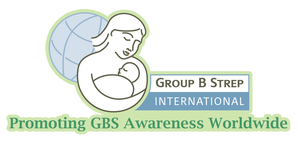During my second pregnancy at 38 weeks I tried starting labor using a breast pump to perform nipple stimulation. Two hours later contractions started. At the hospital I was 4 cm and the doctors broke my water. Eight hours later it was determined that I needed a cesarean because the baby was in "distress". My baby was born blue and needed some oxygen. After 3 days in the hospital I went home. Everything seemed fine. Two weeks later baby Jaden was crying uncontrollably one morning and would not take his bottle or breast and was limp.
I ran to the hospital where they did a spinal which confirmed he had sepsis caused by group B strep bacteria. Even though he was born via cesarean he still contracted it since my water was broken before the cesarean. I have had two cesareans after him and both babies have been clear of this. Today Jaden is 4 years old and isn't any different from another child his age (which I thank God for). No one explains the seriousness of this bacteria so I urge everyone to read as much as possible and watch your newborns as much as possible for even the slightest change. This is a very devastating disease and it can and has changed lives.
— Orquidea Rivera, NY, USA
Editor's Note: Because GBS can cross intact amniotic membranes, a cesarean delivery does not prevent mother-to-child transmission of GBS according to the CDC. Also, late-onset infections (infection after the first week of life) can be caused by sources other than the mother so everyone should wash their hands thoroughly before handling a baby.
I ran to the hospital where they did a spinal which confirmed he had sepsis caused by group B strep bacteria. Even though he was born via cesarean he still contracted it since my water was broken before the cesarean. I have had two cesareans after him and both babies have been clear of this. Today Jaden is 4 years old and isn't any different from another child his age (which I thank God for). No one explains the seriousness of this bacteria so I urge everyone to read as much as possible and watch your newborns as much as possible for even the slightest change. This is a very devastating disease and it can and has changed lives.
— Orquidea Rivera, NY, USA
Editor's Note: Because GBS can cross intact amniotic membranes, a cesarean delivery does not prevent mother-to-child transmission of GBS according to the CDC. Also, late-onset infections (infection after the first week of life) can be caused by sources other than the mother so everyone should wash their hands thoroughly before handling a baby.
To learn more about Perinatal & GBS Misconceptions, click HERE.
To learn more about the Signs & Symptoms of Preterm Labor, click HERE.
To learn more about the Signs & Symptoms of GBS Infection, click HERE.
To learn more about Why Membranes Should NOT Be Stripped, click HERE.
To learn more about How to Help Protect Your Baby from Group B Strep (GBS), click HERE.
To learn more about the Signs & Symptoms of Preterm Labor, click HERE.
To learn more about the Signs & Symptoms of GBS Infection, click HERE.
To learn more about Why Membranes Should NOT Be Stripped, click HERE.
To learn more about How to Help Protect Your Baby from Group B Strep (GBS), click HERE.

